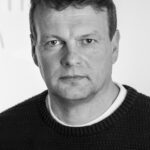Seaweeds (macroalgae) are gaining attention as potential sustainable feedstock for the production of fuels and chemicals. This comparative study focuses on the characterization of the microbial production of alcohols from fermentable carbohydrates in the hydrolysate of the macroalgae Digital Laminaria as raw material. The potential of a hydrolysate as a carbon source for the production of selected alcohols was tested, using three physiologically different fermentative microbes, in two main types of processes. For the production of ethanol, Saccharomyces cerevisiae was used as a benchmark microorganism and compared with the strictly anaerobic thermophile Thermoanaerobacterium strain AK17. For mixed production of acetone/isopropanol, butanol, and ethanol (A/IBE), three strictly anaerobic Clostridium strains were compared. All strains grew well on the hydrolysate, and toxicity constraints were not observed, but fermentation performance and product profiles were shown to be both condition- and strain-specific. S. cerevisiae utilized only glucose for ethanol formation, while strain AK17 utilized glucose, mannitol, and parts of the glucan oligosaccharides. The clostridia strains tested showed different nutrient requirements, and were able to utilize glucan, mannitol, and organic acids in the hydrolysate. The novelty of this study embodies the application of different inoculates for fermenting a common brown seaweed found in the northern Atlantic Ocean. It provides important information on the fermentation properties of different microorganisms and pinpoints the value of carbon source utilization when selecting microbes for efficient bioconversion into biofuel and chemical products of interest.
Author: admin
Christian Patermann has influenced the development of the bioeconomy in Iceland in multiple ways. His leadership has been an inspiration to researchers and policymakers alike and is now finding its way into the seafood industry, a cornerstone of the Icelandic economy. This article describes past development and gives a bid on how the bioeconomy can be further developed, keeping holistic design, system-thinking and the fast-developing experience economy in mind.
Skaftárkatlar are two subglacial lakes located beneath the Vatnajökull ice cap in Iceland associated with geothermal and volcanic activity. Previous studies of these lakes with ribosomal gene (16S rDNA) tag sequencing revealed a limited diversity of bacteria adapted to cold, dark, and nutrient-poor waters. In this study, we present analyzes of metagenomes from the lake which provide new insights into its microbial ecology. Analyzes of the 16S rDNA genes in the metagenomes confirmed the existence of a low-diversity core microbial assemblage in the lake and insights into the potential metabolisms of the dominant members. Seven taxonomic genera, Sulfuric acid, Sulfurospirillum, Acetobacterium, Pelobacter/Geobacter, Saccharibacteria, Caldisericum, and an unclassified member of Prolixibacteraceae, comprising more than 98% of the rDNA reads in the library. Functional characterization of the lake metagenomes revealed complete metabolic pathways for sulfur cycling, nitrogen metabolism, carbon fixation via the reverse Krebs cycle, and acetogenesis. These results show that chemolithoautotrophy constitutes the main metabolism in this subglacial ecosystem. This assemblage and its metabolisms are not reflected in enrichment cultures, demonstrating the importance of in situ investigations of this environment.
Hákarl is a unique Icelandic product obtained by fermenting and drying Greenland shark (Somniosus microcephalus), produced for centuries. However, little is known about the chemical and microbial changes occurring during the process. In this study, on a small industrial scale, fresh and frozen shark meat was fermented for eight and seven weeks, respectively, and then dried for five weeks. During the fermentation, trimethylamine N-oxide levels decreased to below the limit of detection within five weeks and pH increased from about 6 to 9. Simultaneously, trimethylamine and dimethylamine levels increased significantly. Total microbiological viable plate counts, and specific spoilage organisms increased during fermentation but decreased during drying. Culture-independent analyzes revealed gradual shifts in the bacterial community structure as fermentation progressed. During the first three weeks of fermentation, Photobacterium was dominant in the fresh group, compared to Pseudoalteromonas in the frozen group. During the end of the process the groups became more alike with Atopostipes, Pseudomonas and Tissierella being dominant. The results indicate the possibility to reduce the duration of the fermentation period and since the bacterial composition in ready-to-eat hakarl was similar to other fermented products there might also be a potential to standardize the microbial community with starter cultures to gain an optimal fermentation procedure.
Iceland is located between two water masses: the North Atlantic current and the Greenlandic current. Its location makes it a perfect window of the current ongoing changes due to global warming and how marine microbial diversity is coping with it. After the isolation of marine bacterial strains from the Icelandic marine environment, our goal was to identify the isolates by comparing two different molecular methods. The identification of microorganisms relied for many years on 16S rRNA gene sequencing alone. In recent years, MALDI-TOF Biotyper® has offered an inexpensive and rapid identification method for microbes. However, the available database targets mainly human pathogenic strains. How can microorganisms isolated from the natural environment be identified using MALDI-TOF Biotyper? This chapter describes the creation of a database based on mass spectrometry profiles of bacterial isolates in Icelandic seawaters and considers the reliability of this method.
Surface microbes are aerosolized into the atmosphere by wind and events such as dust storms, wildland fires, and volcano eruptions. Only microbial cells that survive the various atmospheric stressors during their transportation will deposit and colonize new environments. These stressors include desiccation, oxidative stress, solar radiation, osmotic shock, and freeze-thaw cycles. In this paper, we specifically studied the survival of representative microbial model strains isolated from the atmosphere over pristine volcanic landscapes to understand their potential to successfully disperse to novel terrestrial environments. In line with previous studies, we found that the most stringent selection factors were the freeze-thaw and osmotic shock cycles and that the strains affiliated with Proteobacteria and Ascomycota were the best to survive simulated atmospheric stresses. Specifically, isolates belonging to Paracoccus marinus, Janthinobacterium rivuli, and Sarocladium kiliense exhibited the highest levels of resistance to atmospheric stress. However, the number of strains tested in our study was limited and caution should be taken when generalizing these findings.
Phytoplankton play a crucial role in the marine food web and are sensitive indicators of environmental change. Iceland is at the center of a contrasting hydrography, with cold Arctic water coming in from the north and warmer Atlantic water from the south, making this geographical location very sensitive to climate change. We used DNA metabarcoding to determine the biogeography of phytoplankton in this area of accelerating change. Seawater samples were collected in spring (2012–2018), summer (2017) and winter (2018) together with corresponding physico-chemical metadata around Iceland. Amplicon sequencing of the V4 region of the 18S rRNA gene indicates that eukaryotic phytoplankton community composition is different between the northern and southern water masses, with some genera completely absent from Polar Water masses. Emilia was more dominant in the Atlantic-influenced waters and in summer, and Phaeocystis was more dominant in the colder, northern waters and in winter. The Chlorophyta picophytoplankton genus, Micromonas, was similarly dominant to the dominant diatom genus, Chaetoceros. This study presents an extensive dataset which can be linked with other 18s rRNA datasets for further investigation into the diversity and biogeography of marine protists in the North Atlantic.
Sustainable aquaculture is an endeavor towards increasing global food security. While access to sufficient water is key for appropriate fish farming, there are various methodological gaps when assessing quantitative water use (QWU). This study discusses the status of QWU in finfish aquaculture in depth and contributes to the understanding of the different QWU methodologies currently used in this field within the Life Cycle Assessment (LCA) framework. A systematic literature review following the Protocol, Search, Appraisal, Synthesis, Analysis, and Report (PSALSAR) methodology was conducted, to evaluate the available scientific literature (January 2009–March 2022) of LCA studies intertwined with QWU of finfish aquaculture and associated fish processing. A total of 22 articles (80 treatments) were included and classified based on their fish production systems, LCA characteristics, and aquaculture intensity (using the Aquaculture Production Intensity Scale – APIS score). Four QWU methodologies were reported: water dependence (WD, 15 studies), AWARE (3 studies), Water Footprint Assessment (WFA, 2 studies), and consumptive water use (CWU, 2). Comparison of results from these methodologies is challenging due to different technical approaches assessing water use quantities. For instance, AWARE, WFA and CWU account for water consumption, whereas WD accounts for all the water reared into a system, regardless of it being returned to the sourced watershed or not. WD can be used for fresh, brackish or seawater, whereas the other methodologies account exclusively for freshwater. WD and AWARE consider only blue water, WFA includes green, gray and/or blue water, and CWU considers green and/or blue. Moreover, WD and CWU are inventory methodologies, AWARE is midpoint, and WFA can be inventory or midpoint methodology. QWU method development for aquaculture, which is a complex system with diverse water requirements, is much needed. This study highlights future research needs in QWU in aquaculture, to help standardize the QWU methodologies used in aquaculture and facilitate the implementation of water management practices for both direct and indirect water usage, which are key for achieving sustainable aquaculture.
Expanded polystyrene (EPS) boxes are used for the packaging of perishable and vulnerable goods during transportation; for instance, fresh fish fillets. It is important to minimize the weight and cost of the packaging materials while maximizing strength to avoid damage to the packaging and the product itself. EPS boxes have to withstand considerable loading, which arises due to rough handling and stacking during transport. This work focused on the compressive and flexural properties and stacking strength of 3 kg capacity EPS boxes with densities of 22 and 23 kg/m33, by combining experiments and simulation. Material properties were obtained from the compression test, and the behavior of EPS boxes under stacking load was investigated through both experiments and finite element simulations. The influences of density and different sample preparation methods on material properties and stacking strength were investigated. The results indicated that, with the density increasing by 1 kg/m33, the initial modulus rises 10–15% and the compressive strength increases by 7–8% in the compression test, while in the flexure test, the rupture stress increases by 3–7% . Additionally, an increase of around 2% was observed for the specimens cut with a hot wire compared to those cut with a table saw. However, because the failure mechanism for a box as a whole differs from that of small units in the compression and flexure tests, density has less of an impact on stacking strength. Finally, a good agreement was obtained between the simulation and stacking strength test results.
Native livestock breeds are part of the history of the Nordic people and comprise a resource for future food production. In this study, net gain and carcass characteristics of two Danish, three Finnish, one Icelandic, six Norwegian and five Swedish native cattle breeds were retrieved and compared to commercial breeds: two beef breeds and two dairy breeds. Breed data were collected from national databases and sorted into six animal categories: young bull, bull, steer, heifer, young cow and cow, for which means and standard deviations were calculated within each country. The native breeds ranged from small-sized milking type breeds with low net gain, carcass weights and EUROP classification to larger multipurpose breeds with high net gains, carcass weights and EUROP classification.
All Finnish and most of the Norwegian and Swedish native breeds had lower net gain and carcass weight than the dairy breeds in the same category and country, but with similar carcass conformation and fatness scores. The two Danish native breeds had higher net gain, carcass weight and conformation class than the reference dairy breed, but lower than the reference beef breeds. The net gain and carcass traits of the Icelandic native breed were similar to the smallest-sized native breeds from the other countries. The carcass traits of the native breeds indicate that they have comparative advantages in an extensive production system based on forage and marginal grasslands. They may also succeed better in the value-added markets than mainstream beef production.






